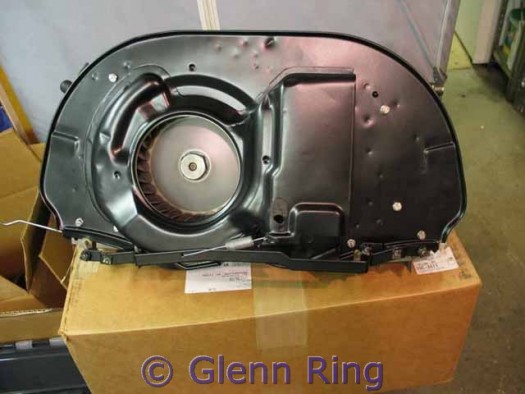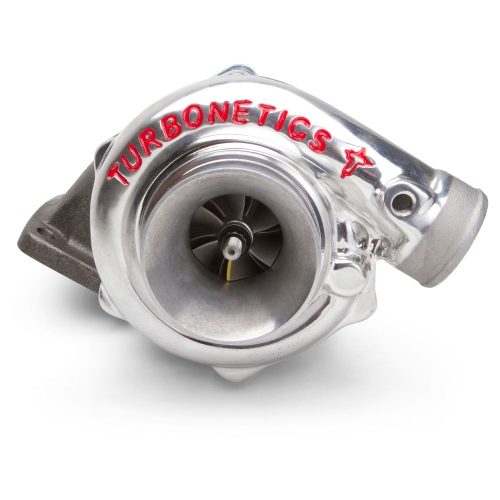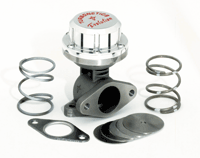Tonight I started removing the doghouse shroud. I have a little bag of hardware I placed in my tubs, but I want to save this picture to maybe make assembly easier in the future.

Tonight I started removing the doghouse shroud. I have a little bag of hardware I placed in my tubs, but I want to save this picture to maybe make assembly easier in the future.

Many years ago it was resolved that 92mm were the largest cylinders practical to fit within the stud circle of the Type I engine. Their wall thickness (or lack of it) was a liability, though – cylinders that thin cannot be expected to maintain their shape during thermal transients, so the piston rings are constantly trying to seat against a moving target. Rapid wear and excess blowby/oil consumption were the natural result.
At the time, 90.5mm cylinders had slightly smaller diameter (and cylinder walls that weren’t much thicker) so they weren’t known for great longevity either. Then it occurred to someone that they could produce 90.5s with the O.D. of the 92s, and we finally got an option that had some life expectancy.
A 1775 didn’t make quite the power of an 1835 when both were fresh, but 10-20 thousand miles later it was a different story.
With the advent of the 8mm head stud, the envelope was again pushed and we got 94s. They are NOT by any stretch of the imagination “thick wall” as some of their proponents describe them – the only thing they’re thicker than is the original 92s and 90.5s, or the slip-in 87s and 88s (and their only .006″ thicker than the 87s, which many of those same folks disparage). The case openings are cut out to the threads of the stud inserts, and the heads to the point that the stud holes are broached – there’s no room for any error when machining for 94s!
For a turbo application, thin cylinderwalls are a recipe for disaster. Even the most momentary of excursions into detonation will result in split cylinders, often accompanied by destruction of the cylinder head…if you intend to add a turbo, you’ll be wise to go with the thickest cylinders you can find. In the old days people would “power sleeve” 92 jugs by pressing/shrinking a steel ring over the upper spigot and opening up the head for it – although it didn’t address the shape-stability issue it reduced the incidence of splitting. Nowadays, there are 92s made which use the “94” O.D, (and 88s which use the “92” O.D.) – IMO one of these would be the wise choice for a turbo motor.
What did a turbo motor of my size make on the dyno?
This is a quick list of some of the motors that made there way to the dyno. Most of the combos were made to make the most power on pump gas. Some and most of the owners would add some race gas and turn it up!
1600cc
With good valve train and our old base 1600T turbo kit (32×36 pergresive carb) on pump gas.
110hp and 121tq @11lbs (test was on our junk 1600 motor, motor was a used motor to start, we used it as a turbo for 19,770 miles, We did add dual springs, retainers,keepers,SS valves and 1.25:1 rockers with C/M push rods)
1641cc
With 1600T Ghia kit (T25 turbo) LBC1 cam,35×32 ported heads,7.4:1 on pump gas.
127hp and 141tq @10lbs. This motor was snappy and sound like a big 2L.
1776cc
with our LBC1 cam and basic 1600T kit (T25 turbo) stock 35×32 heads 7.5:1 on pump gas.
139hp and 154tq @ 7lbs
1835cc
with our LBC1 cam and 1600T kit (T3 turbo). Motor was used in our baja 67 bug. This motor started off as a 46mm Kadron motor making 96hp and 107tq at the wheels (no belt and aircleaners off) with a old Babe Erson cam.
With a turbo made 155hp and 165tq @ 8lbs. Motor then made its way too the LowBugget race car for two years and ran best of 11.44 @ 118mph at 22lbs of boost. (it did split a cylinder on its last pass trying to run 24lbs of boost!) but on that pass clicked off a 1.42sec 60′ and 6.98@101mph in the 1/8 mile but the sound of the air coming out of the cylinder made me shut it down!
1915cc
with our base 1600T kit (T25 turbo), LBC2 cam, pocket port 40×35 heads.On pump gas.
167hp and 176tq @8lbs of boost.
1915cc
with our LBC2 cam, base1600T kit (T3 turbo) with our old and small 32×36 pergresive carb.
176hp and 207tq at the wheels on 15lbs of boost. This motor in a stock 1968 bug ran a best of 13.31 @101mph in 1/4 mile on 165 stock tires @12lbs of boost!
1915cc
1600T kit with a (T3 turbo) and 40×35 ported heads.
241hp and 252tq @ 15lbs of boost. Car ran 11.79@ 115mph on DOT slicks .Full stock steel 67 bug.
1915cc
with our Manx kit, (T3/T4 turbo), ported 40×35 heads and the holley 500 carb.
240hp and 252tq @ 13lbs of boost. This motor was built to make power, I hope to get info of what this car runs in the 1/4 mile and on the street soon!
My 1915cc combo. (9-9-09)
DPR69mm Wedgmated to a stock flywheel, LowBugget 5.4″ H-beam rods, Super case with 10mm Bugpack Racing head studs, 40×37 Pocket Port heads with K800 springs and +.200″ valves, LBC 4 cam with LowBugget 1.25 rocker, Mahle piston and cylinders, -20grams wrist pins, 1qt sump with bypass oil control, 2000TS turbo kit with TB73 turbo, Pro Race Wastegate, Turbo prep 500Carb 298hp and runs low 10’s all day!!!!
Go for a ride video 1, video 2
2054cc
with our 2000TS kit (T3 turbo) and a holley 500 carb. LBC3 cam, 40×35 pocket port heads, 7.8:1
198hp and 236tq at the wheels on pump gas. I can run up to 12lbs on pump gas but we leave the boost at 8lbs just in case we get a bad batch of gas.This motor has over 48,000 miles on it now! Car runs a best of 8.55 in the 1/8 mile on 205/65 tires on pump gas.
Would you like to go for a ride in this car? In car video, out for test drive!
2054cc
with our 1600T kit and (T3 Super 60 turbo) holley 500 carb. 40×35 pocket port heads. LBC3 cam.
No Dyno info. Track 12.20 at 109mph on 18lbs boost with DOT Street Tires.
2110cc
with our 2000TS kit. (T3/T4 turbo) 40×35 ported heads 7.8:1our LBC3 cam
246hp and 267tq @20 lbs of boost @ 4,900rpms. On 12lbs of boost this monster made 174hp and 240tq. @ 3,800 rpm’s. This thing would drive like a dream! Over 200 foot ponds of tourqe at less than 4,000rpms !!!! We stoped the dyno pull as all we wanted was to make more than 225hp. once we did that there was no reason to keep beating on it!
This beast is going in to a 1970 bug for street use only. (the owner says!)
2110cc
with our 2000TS kit. (GT33 turbo) 42×37 ported heads 8.7:1our LBC4 cam
269hp and 232tq at the wheels! On 14lbs boost. Beast to 7500rpms yet you can drive it on the street!!!
2276cc
Off Road/Drag Race kit, (T3/T4 turbo) Holley 500 carb LBC4 cam 42×37 ported heads.
256hp and 258tq on 14lbs of boost. All dyno rpm pulls below 6,000 rpms
2332cc
Street Race kit, (GT33 turbo) Holley 500 carb LBC4 cam 42×37 ported heads. 338hp
2387cc
with our 2000TS kit. (T3/T4 turbo) 40×35 ported heads 7.8:1our LBC3 cam 321hp and 270tq @20 lbs of boost
2387cc
with our 2000TS kit. (GT33 turbo) 46×38 ported heads 9.0:1 our LBC4.5 cam 385hp on less than 20lbs boost!!!
Includes a Holley TP500 Carb

Turbonetics T3 Super 60 Turbo

and a 38mm Turbonetics Evolution Wastegate

2110cc
with our 2000TS kit. (T3/T4 turbo) 40×35 ported heads 7.8:1our LBC3 cam
246hp and 267tq @20 lbs of boost @ 4,900rpms. On 12lbs of boost this monster made 174hp and 240tq. @ 3,800 rpm’s. This thing would drive like a dream! Over 200 foot ponds of tourqe at less than 4,000rpms !!!! We stoped the dyno pull as all we wanted was to make more than 225hp. once we did that there was no reason to keep beating on it!
This beast is going in to a 1970 bug for street use only. (the owner says!)
